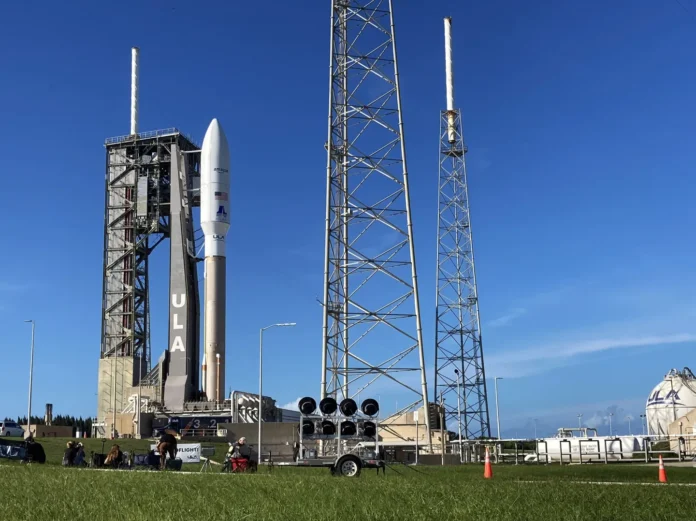Launch and Recovery
SpaceX lifted a Falcon 9 rocket from Cape Canaveral and placed 24 of Amazon’s Project Kuiper satellites into low Earth orbit during a launch window that opened at 9:40 a.m. Eastern time, after a planned delay from the previous day.

The first stage of the rocket was identified as B1091 and it flew for the first time on this mission. The booster separated and returned to land on the SpaceX drone ship named A Shortfall of Gravitas in the Atlantic Ocean, completing a controlled recovery that SpaceX uses to cut costs and speed operations.
Amazon said the satellites reached an initial orbit near 289 miles, and the Kuiper team will move them up to their planned working altitude over time, where they will join other Kuiper craft as part of a growing internet system.
Partnership and Timeline
This flight is part of a deal in which Amazon bought three Falcon 9 launches from SpaceX, a rare case where two firms that compete in satellite internet also work together to get hardware into orbit. Amazon and SpaceX signed that contract in December 2023 to help fill launch slots while other rockets remain late or scarce.
With this mission, Amazon’s count of Kuiper craft in orbit rose to about 102, a mix of launches on Atlas V rockets and recent Falcon 9 flights. Amazon plans a constellation of more than 3,200 satellites to offer broad internet service, and regulators asked the company to have half of the system in place by mid 2026, a target that now looks hard to reach given production and launcher delays.

Impact On The Launch Market
Amazon has spread its launch work across several providers, including United Launch Alliance, Arianespace, Blue Origin and now SpaceX, as a hedge against delays. For SpaceX the work brings business and income, while for Amazon it brings another reliable way to put satellites up fast. This mix shows how the market now blends rivalry and practical deals in order to meet big deployment goals.
Personal Analysis
The mission gives Amazon some breathing room by adding another block of satellites that can reach customers, but it does not solve the bigger timing problem. Amazon must scale production and find steady launch slots to meet the regulator timeline, and the company still depends on many different rocket makers whose schedules can change. For Amazon, buying flights from a rival makes sense in this moment, and for SpaceX it means paid payloads that fit between its own missions, yet the underlying push to build thousands of satellites remains the hard part on the ground.
I expect regulators will watch the next months closely, and Amazon will ask for more time if parts of the campaign lag behind. At the same time the market will keep shifting as firms trade launch capacity for cash and speed. This launch shows the trade off: fast access to orbit, but a still long path to full service.
SOURCES: SpaceNews

